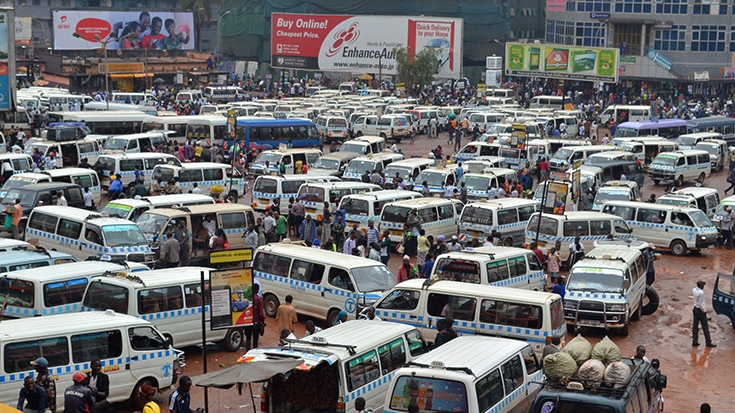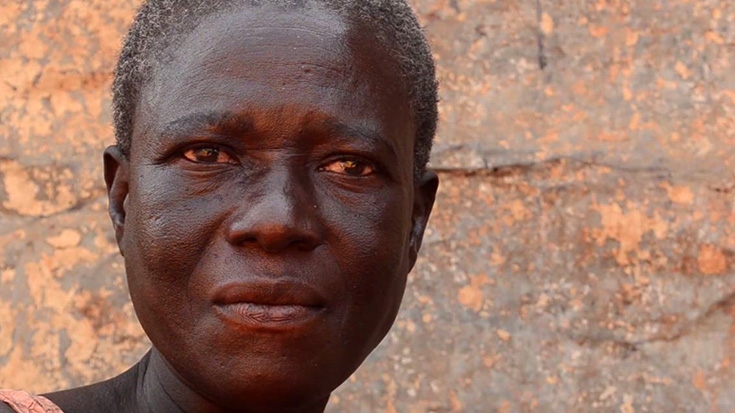1. What is the Uganda Economic Update?
The Uganda Economic Update series draw on international experience and best practice to provide up-to-date information and analysis on the country’s economy and to propose strategies to facilitate inclusive economic growth. The UEU is published by the World Bank on a six monthly basis. The fifth update was published in March 2015, with a special focus on urbanization.
2. What are key findings of the fifth Uganda Economic Update?
The report analyses the current state and prospects of Uganda’s economy and outlines a series of strategies to accelerate its growth. The report acknowledges that the economy is expected to grow faster in the medium term than it has in recent years. However, both the low rate of private sector investment growth and the limited degree of transformation from low to higher productivity activities threatens to constrain the acceleration and maintenance of the high growth rates that are necessary to enable the country to achieve middle income status. The report further notes that while the majority of the population is still concentrated in rural areas, non-agricultural economic growth and jobs are concentrated in urban areas. Similar patterns, with a concentration of economic growth in urban areas, are found in many other countries around the world. The report concludes that supporting a more efficient urbanization process through investments in cities could accelerate growth, raise revenues and lower fiscal pressures. By managing the process of urbanization effectively, Uganda has excellent potential to achieve its goal of becoming a middle income country and of eliminating poverty all its citizens.
3. What is urbanization?
Urbanization is a process by which the population in cities and towns increases relative to that in rural areas. It also defines the ways societies adapt to this change. Urbanization is the result of social, economic and political developments that lead to the concentration of people and growth of large cities. It is usually associated with changes in land use and a transformation from rural to metropolitan patterns of organization and governance. In development history, urbanization has been characterized as a process that occurs when workers moved towards manufacturing hubs in cities to obtain jobs in factories as agricultural jobs became less desirable.
4. What characterizes good urban areas or cities?
A functioning urban area should provide both an efficient working environment and a livable environment for its residents. The work environment determines the level of residents’ access to opportunities for generating an income, while the living environment refers to the quality of housing, the level of access to public goods, and the availability of opportunities for recreation and social activities. Efficiently developed cities are characterized by good work and housing structures and decent transport networks to facilitate the movement of people, goods and services. Such places also provide good access to social services, including education and health care, clean water and electricity. Finally, administrative institutions, such as banking and insurance, are readily available to ensure that services are running smoothly.
5. What is the state of urban development in Uganda?
The process of urbanization in Uganda is just beginning. According to the preliminary results of the National Population and Housing Census, 2014, 18 percent of Ugandans live in urban areas. The proportion of the population living in urban areas is highest in Central Uganda, which is also the region with the highest rate of mobility of labor. While the process of urbanization in Uganda is just beginning, the proportion of the population living in urban areas is increasing by 4.5 percent per year, despite the fact that fertility levels within urban areas have generally been declining. Both overall population growth and the increasing tendency of the inhabitants of rural areas to move to cities contribute to this process. In fact these factors could result in an increase in the population of Uganda's cities from 6 million today to more than 30 million within the next two decades.
6. Has Uganda benefitted from urbanization?
Urban areas in Uganda play a significant role in driving economic growth. More than 70 percent of non-agricultural economic activity and non-agricultural jobs are located in urban areas. Urban areas are leading the process of transformation away from agriculture, resulting in improved socio-economic conditions for urban dwellers, with migrants from rural areas often living in better conditions and earning significantly higher incomes than their counterparts in rural areas. However, until now the urbanization process in Uganda has not been managed optimally. The typical Ugandan city has grown rapidly, but without sufficient policy coordination. As a result, the emergence of Ugandan cities has not necessarily resulted in increased productivity, with the majority of jobs created through the urbanization process involving low productivity activities. Furthermore, the living environment does not provide decent housing or adequate public goods for a significant proportion city residents, with at least 60 percent of the urban population in Uganda living in slums. In addition, the mobility of people and goods is constrained and costly due to the heavy congestion in the cities.
7. What does the future hold for Uganda’s cities?
As elsewhere in the world, an increase in the average per capita income in Uganda is expected to be associated with an increase in the proportion of its population living in urban areas. This is because the successful transformation of the agricultural sector will result in an increased proportion of residents of rural areas moving away from the farms and concentrate more strongly into non-agricultural activities in urban areas. The exploitation of the country's oil resources may also increase the attractive force of cities, while intensified regional integration will require Kampala to compete with other large regional cities, including Dar es Salaam and Nairobi.
8. What measures must Uganda take to realize effective cities?
Uganda must ensure that its cities are ready to accommodate the increasing number of residents expected to settle in urban areas and able to facilitate the growth of business enterprises, thereby creating opportunities for productive employment for a greater proportion of the residents of these areas. With rapidly increasing demand, the level of access to, and quality of, public services such as water and sanitation services also needs to be improved.
To ensure the development of functional cities, Ugandan policymakers will need to facilitate a high level of coordination between different layers of actions involving public investment in infrastructure, enterprise investment in productive capital, and household investment in housing. Each layer faces its own coordination challenges. For example, within the public sector, successful urbanization will require the coordination of a range of different types of investment, including investment in physical planning for buildings and the provision of transport, housing and social services. It is better to anticipate and plan for this at the very early stages of the urbanization process, as it becomes very difficult to correct mistakes retrospectively. The decisions of individual agents are sequential, so that in the absence of coordination, it is highly unlikely that the evolution of a city will ensure the provision of good facilities or raise the productivity of workers. If Uganda does not improve the working and living environment in urban areas, it will exacerbate congestion and other diseconomies of scale, thereby limiting the benefits of urbanization.
9. What are the key recommendations of the Fifth Uganda Economic Update with respect to urbanization in Uganda?
The process of urbanization in Uganda is still at its early stages. However, a combination of a fast growing population and increasing rate of rural-urban migration could result in an increase in the population of Uganda's cities from 6 million today to more than 30 million within the next two decades. This dramatic increase may exacerbate the challenges already facing urban areas, constraining their ability to drive growth; to create productive jobs; and to provide decent housing to urban residents. Investment in cities is critical for the achievement of equitable growth and poverty reduction and is therefore central to the next stage of Uganda’s development, particularly in the context of East African integration and the upcoming exploitation of the country's oil resources.
Uganda must seize the opportunity to make the country's cities more competitive, thereby enhancing their abilities to drive growth and to provide good living conditions. To achieve this, the Fifth Uganda Economic Update recommends the following:
- Each of Uganda’s cities must have a clearly defined plan and vision. If policy makers do not have a clear vision of what they intend to achieve, it will be difficult to identify the correct reforms and to coordinate them appropriately. A failure to formulate plans and to implement them effectively has a drastic, irreversible cost.
- Uganda must build the appropriate institutions to ensure the effective implementation of its plans.
- Uganda must prioritize reforms that will help build the competitiveness of Uganda’s cities. International experience suggests that building density and connecting cities is the first priority. This requires:
- Improving land and property rights by reviewing laws and strengthening land management institutions to support the building of structures and transport systems within cities;
- Improving mobility within cities through strategic investments in connective infrastructure such as roads and railways; and in smart policies to improve public transportation and security and to streamline transport systems;
- Improving mobility between cities to promote intercity trade and with rural areas, to promote remittances flow, and to access regional and global markets.
- Adopting polices to generate agglomeration benefits, including through the development of special economic zones to increase density and connectivity within specific locations.
- Improving living conditions through the formulation and implementation of better housing policies and systems; and
- Improving access to social services
Both good planning and effective coordination across the public sector, the enterprise sector and the household sector are crucial to ensuring that urbanization provides optimal benefits for all Ugandans.
Factoids
- 6.4 million Ugandans live in urban areas
- 70 percent of non-agricultural GDP in Uganda is generated in urban areas
- 54 percent of people living in Central region are residing in urban areas
- Eastern region is the fastest urbanizing region
- Kampala is home to 31 percent of Uganda’s urban population
- 69 percent of Uganda’s urban population live in small cities with less than 500,000 people
- 21 million people will live in urban areas in Uganda by 2040
- By 2013, 38 percent of the urban population was connected to the electricity grid
- The number of firms engaged in real estate and business services in Kampala is 11 times the overall average across districts
- Over the first decade of the 2000s , the number of jobs in large cities more than doubled, from 191,000 workers to 395,000 workers
- Over the first decade of the 2000s, cities accounted for 36 percent of overall job growth
- Only 15 percent of the new employment opportunities in Kampala are in tradable activities
- Households in Kampala pay an equivalent of approximately 8 percent of the household budget for transport
- Walking is the main mode of transport in Kampala, and 70 percent of the residents of Kampala walk to work
- 80 percent of the global economic activity is generated in cities

